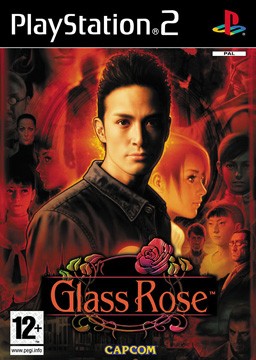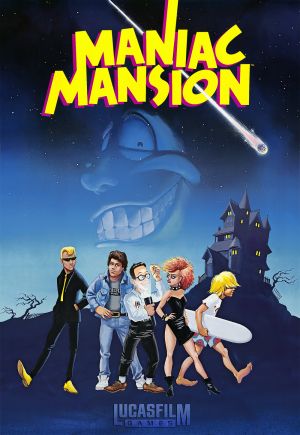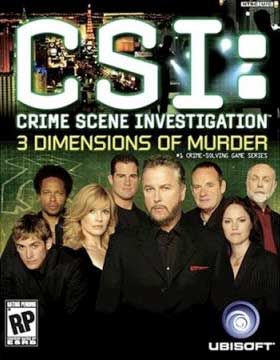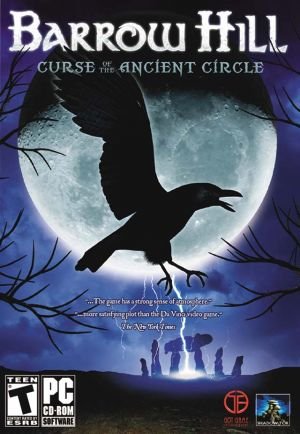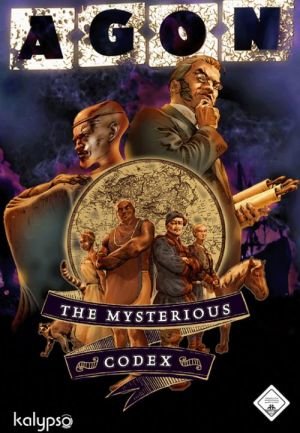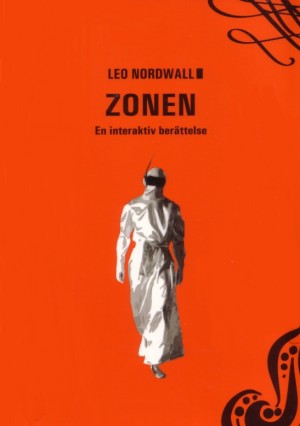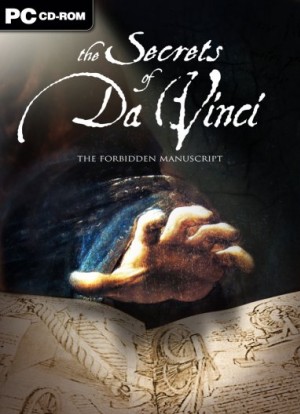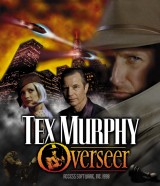Review for Glass Rose page 2
When you make a list of great PlayStation 2 adventure games, one name which doesn’t often crop up is Glass Rose. Developed by a then-unknown studio called Cing, the game was released in 2004 by Capcom but never received a U.S. release, only translated from its original Japanese language for Europe. This murder mystery set largely in 1929 Japan probably still won’t make the “great” list even by those who play it, but it is undoubtedly a quirky cult offering that represents an intriguing break from traditional adventures. High-quality visuals and sound production enhance a truly extensive plot, but Glass Rose is a decidedly flawed experiment, and an acquired taste that demands sharp concentration.
Players takes the role of Takashi Kagetani, a rookie reporter who has been asked by his friend Emi to probe the deserted Cinema Mansion, site of an old unsolved murder. Emi’s grandfather was originally involved in investigating the case, and after finding his old notebook, she now wants to uncover the truth behind the grisly past. When they get to the mansion, however, Emi disappears before Takashi’s eyes. In a daze, he finds himself inexplicably transported seventy years into the past, yet still in the mansion – now looking as good as the day it was built and teeming with activity. With his friend nowhere to be found and more deaths to come, Takashi alone must investigate the tragedy that led to the downfall of this mansion, in the hopes that he can solve the mystery once and for all and return to his own time in the process.
Adding to the confusion of being sent hurtling back through time, you are presumed to be Kazuya, the prodigal son of the head of the household. This premise is handled in quite an obscure way, as you won’t really discover the reason for this mistaken identity until quite some time has passed. The main plot is a complex one and there is a significant backstory to go along with current events. The original murder involves four generations of the family, each connected to it in one way or another through a twisting storyline that – even now – I’m not sure I fully comprehend. I strongly suggest players try to complete the game with as few interruptions as possible. The first time I played through, I finished the game in a few days and the story made more sense than it did during a more fractured recent replay. It really is that intricate, and some of the details are only revealed by finding the optional “Denemon’s Notes”, so a large chunk of explanatory background can be missed entirely.
The large supporting cast is well-developed, but there are an awful lot of characters and you really need to pay attention to who is who, including during flashbacks. This includes the likes of Denemon, head of a silent film studio and the central character connecting the different branches of the family, and Hisako, his first wife who committed suicide after giving birth to twins, one of which carried a cursed birthmark. Denemon’s second wife, Yurie, gave birth to two more girls, Marie and Kanae, the latter becoming insanely jealous of her sister and trying to burn down the annex with her inside. And this is only scratching the surface, as the game approaches soap opera territory with the sheer number of characters and meandering narrative.
In Japan, the marketing push was centred around the main character being modelled and voiced by Masahiro Matsuoka, actor and drummer of the band Tokio. By all accounts he is represented on-screen very realistically, complete with spiky hair and denim jacket – which does jar somewhat when you realise the entire household mistakes you for someone living in the 1920s. Aside from Takashi, other character models are somewhat hit and miss; the butler, for example, is quite basic and uninspired. American actors were used for the English version of Glass Rose, and this is a fairly standard Japanese-to-English dub job. Voices might not be perfect, but they are serviceable.
The Cinema Mansion in its heyday was designed as an Art Nouveau masterpiece. There is a consistent style throughout, but each room is individually designed with a high level of ornamental detail. Every piece of furniture has obviously been researched in order to fit the overall theme, and the art is cohesive and convincing for the era. The mansion is very creepy, however, due to a clever combination of lighting and an atmospheric soundtrack. You’ll often feel isolated, as the non-player characters only tend to appear when something important is happening, so you feel cut off as you explore the shadowy hallways on your own. Background music only fits the period somewhat, but it does a good job of conveying the eerie, slightly mystical atmosphere. The music changes as you travel throughout the mansion, and the longer it takes for you to reach a certain checkpoint, the more strained and panicked it becomes.
This panic stems from the fact that each chapter has a time limit. The game is structured into different hours of the day, spread over a three-day time period. One in-game hour equates directly to a real hour of play time, but some chapters will take you only ten minutes to complete while others take almost the full hour. Once you achieve your tasks, the game will skip forward, so you won’t have to wait until the hour is up, but you must complete all of the set objectives (which aren’t always obvious) before the hour runs out. If you don’t finish in time, the game will reset, forcing you to replay the hour and costing some of your “mind points”. Mind points are like an in-game currency, which you must collect and store for use during conversations. When a character is withholding information, you can use these points to delve into their memory to gain insight into what really happened. Points are collected in several ways: by clicking on butterflies scattered throughout the game, by completing optional minigames such as Tangram – which is akin to a Japanese take on jigsaws – and by reaching the end of a chapter, when they get topped up.
Items such as photographs and letters can be discovered and kept as clues, but Glass Rose has no standard inventory and the story doesn’t involve typical adventure game puzzles. You will encounter interactive objects as you go along, but you won’t have to “use” a key on a lock, for instance, as these actions are automatically carried out. The interface is point-and-click, and the game purportedly supports USB mouse input, but control with a gamepad is carried out by moving the cursor with the directional pad. Discovering items to interact with can be a problem, unfortunately. There is little or no distinction between static objects and those you can use, and mind points are often hidden in objects you wouldn’t expect – clicking on a couch might unearth one, for no particular reason. Character animation is limited, so when an item is discovered, a close-up of the object will appear on-screen, rather than showing Takashi walking over and picking it up.
Conversations use a unique approach known as the “Free Word System”. After a character has spoken to you, their last paragraph of speech is displayed on-screen, and you are able to highlight any word or words that you must pursue further. Sometimes the game can be picky as to how many words you need to highlight for the correct response to be triggered. This involves a lot of trial and error in testing which words will work, but you’re allowed infinite attempts with no penalty. Some words will elicit no response, but even non-vital words can produce one, so success may involve trying every word before finding the jackpot. To complicate this method further, you can spend your mind points to activate “Divine Judgement”, where instead of the actual spoken words being displayed, you can see what the character was really thinking when they said them. There are also several key conversations where you can only pick one word, with each word affecting the situation in a different way.
In addition to the conversations and Tangrams, which form a predetermined shape that reveal hints on where to go next, Glass Rose includes everyone’s favourite game mechanic: QuickTime Events! At these points – which are not very frequent; perhaps two or three times each day – two or more options such as “duck left” or “duck right” will appear on-screen and require quick reactions to pick correctly. The time allowed can be very brief, and you lose mind points for getting these wrong. If you lose all of your points, it’s game over, forcing you to re-load your last savegame and carry on from there. You can also collect Emi’s heart fragments, which contributes to whether or not you get the best ending. This was a side mission I never fully understood, as it is hard to judge when you have collected enough.
Fortunately, there are help files which pop up as each new gameplay element is introduced, making it easier to understand how to play each segment. This is thoroughly necessary, since there are so many different strings to this bow. The game also offers a lot of pointers and hints about what you should be doing next. Upon entering a room, a series of images flashes up, working as a guide for what you need to focus on, and when you leave a room, any character present normally gives you a thinly-veiled hint as to where you should head next. Your in-game journal also helps to keep track of all the clues and characters, and can be accessed throughout the game from the pause menu. Such in-game help is good, but one big problem is that most events and conversations have to be conducted in a very specific order. It can be frustrating to know what you want to investigate next, only to find that you have to wait for a particular character to move to that room before you can gain access. This creates an overly linear progression that doesn't really allow for several threads of investigation to exist at any one time.
Of the four endings to Glass Rose, only one is truly positive, though they almost operate on a direct scale, with each being slightly better than the last. Three of the four endings depend entirely on one conversation on the final day. This is disappointing, but it does mean you can re-load your game from the start of the last day to change the outcome. The other ending depends to some extent on how many heart fragments you have collected, and it probably isn’t enough motivation to play from the beginning just to attain the best cutscene. Other than the different endings, there really isn’t any replay value, unless to fill in any story details you might have missed the first time around. For a single playthrough, Glass Rose isn’t a lengthy game, as all the action is contained within the one house, and you never feel too aimless. Of course, you can extend your time with the extra puzzles and optional item searches, but if you don’t get stuck or have to re-load often, the game isn’t likely to take experienced adventurers more than a few days.
Overall, if you value a complex mystery and are willing to really commit to understanding the storyline, Glass Rose has created an intriguing game world to explore. The backstory is impressive, but it must be delved into deeply to get the most out of the experience. As a game, however, the play mechanics can be punishing. Time limits, QTE’s and mind points (which equate to “lives”) are usually staples of other genres, though this is definitely not an action game. The trial and error nature of the conversations is often unrewarding, and even basic exploration becomes a “click everywhere” affair later in the game, when hints are few and far between. The game certainly won’t be for everyone, then, but if you have a PAL-based PlayStation 2 system, probing the Cinema Mansion should be enough to keep you hooked, just so long as you can wrap your head around its mind-draining mystery.




